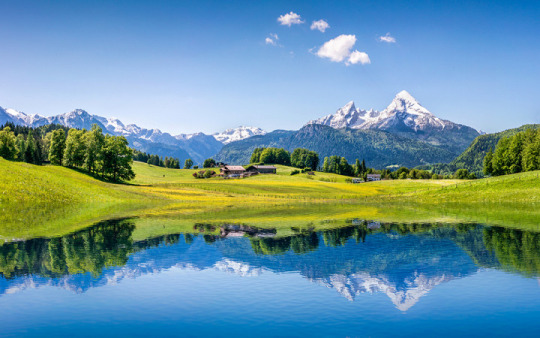Located in Central Europe. The Alps are the highest and most extensive mountain range system that lies entirely in Europe
Don't wanna be here? Send us removal request.
Photo

One adaptation is to produce heavy acorns, The trunk of an oak is protected by bark, and water travels to the leaves to help in the process of photosynthesis, where sunlight and water combine with chlorophyll to create energy.
0 notes
Photo

One way the brown bear adapts is by hibernating, or remains inactive and essentially sleeps, during the winter.
0 notes
Photo

Vultures have strong bills that are adapted to tearing tough flesh. They are curved, have a fingernail texture and grow throughout life.
0 notes
Photo

A MOUTAIN GOAT
Their horns help to defend them from predators
0 notes
Photo

Alpine marmots
They survive extreme changes in weather and food shortages during winter by hibernating
0 notes
Photo

Pinus cembra Also known as the The Swiss stone pine germinates well on organic soils with an accumulated layer of litter and moss. It also has the ability to establish itself on mineral soils or even rocky surfaces and is able to resist very low winter temperatures.
0 notes
Text
Why u should visit
you should visit the alps because it is home to the most beautiful and dramatic scenery in the world. it home to many elegant and majestic animals and living things. the view from the top shows many hidden lakes making it hard to leave. also the aesthetic is literally so gorg-tastic
0 notes
Photo

Primula vulgaris is a VERY beautiful flower on the mountain. Primrose has adapted to its environment by having taproots. The roots give the plant a support structure and draw water from the soil by osmosis.
0 notes
Photo

This is the perennial grass that grows on the mountain. They survive/adapt because they rise from permanent underground structures.
0 notes
Text
Threats to the Alps
some thrests the alps face are pollution and habitat loss to mass tourism and the impacts of climate change. the alps are heavily exploited causing fragmentation.
0 notes
Photo

beech trees develop shorter trunks with horizontal branches and wide foliage crowns. This is one adaptation that allows them to thrive in various habitats and environments.
0 notes
Text
Perception and Seasons
The alpine regions get the largest amounts of rain and snow. In general, there's more precipitation in the western Alps, as clouds come in from the Atlantic and loose most of their water before reaching the south-eastern parts of Switzerland
winter lasts throughout january, February, and march. spring lasts throughout april, may and june. summer lasts through july, august, and september. fall lasts throughout october, November, and december
0 notes
Text
Locations around the world
The alps mountains are in central Europe and stretch along France, Italy, Germany, Austria, Slovenia, Switzerland, and Liechtenstein.
0 notes
Text
Climate & temperature
The 5 main climate type in the alps are:
1 Subalpine region
2 Alpine region
3 Glacial region
4 Olive region
5 Vine region
January temperatures on the valley floors range from 23 to 39 °F to as high as 46 °F
In the temperature ranges from july 59 and 75 °F
1 note
·
View note


